Oncology Communication Wireframes
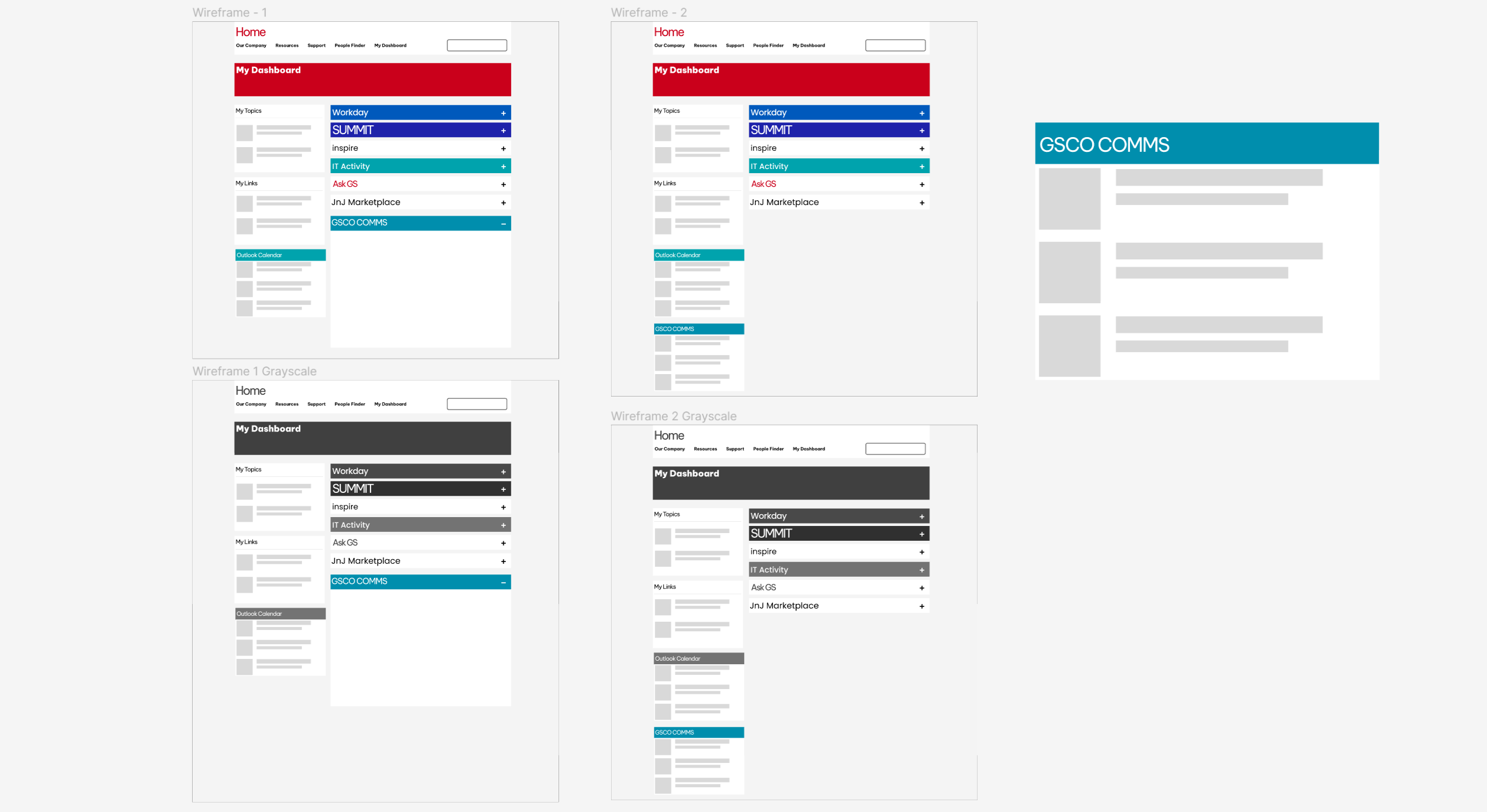
Timeline: 2 Weeks, Role: Research Synthesis and Theme Synthesis, Workshop Facilitator, Wireframe Lead Developer
Context
While interning at Johnson and Johnson I worked on the RVR team, which acts as internal consultants tasked with maximizing value across JNJ through the use of product management methodologies.
Project Description
The Oncology sector within the company faced challenges related to inefficient communication practices and a significant volume of incoming communications. The existing communication methods were not effective, leading to difficulties in managing and responding to the high volume of messages. Our team was tasked with developing a workshop to revolutionize a new communications model with the penultimate deliverable being wireframes that would be presented to the projects sponsor upon completion.
My Role and Responsibilities
I supported the research and analysis, workshop development, and led the overall solution’s wireframe development.
Design Process
- Discovery
- Team Interviews
- Workshop
- Impact Map
- T Sheet
- Define
- Interview Analysis and Theme Synthesis
- Design
- Wireframes
- Results
- Reception
Discovery
Team Interviews
We recognized that the first step toward a solution was understanding the current reality. To achieve this, we conducted a series of in-depth interviews with key stakeholders within the Oncology team. These conversations revealed numerous pain points, with a recurring theme of struggling to effectively navigate the landscape of Oncology conferences.
Workshop
Using the research and drawing on product management techniques like impact maps and T-Sheets, we designed a two-day workshop. The objective was to facilitate collaborative discussions within the project team in order to create an innovative communication model capable of addressing the identified challenges.
Impact Map
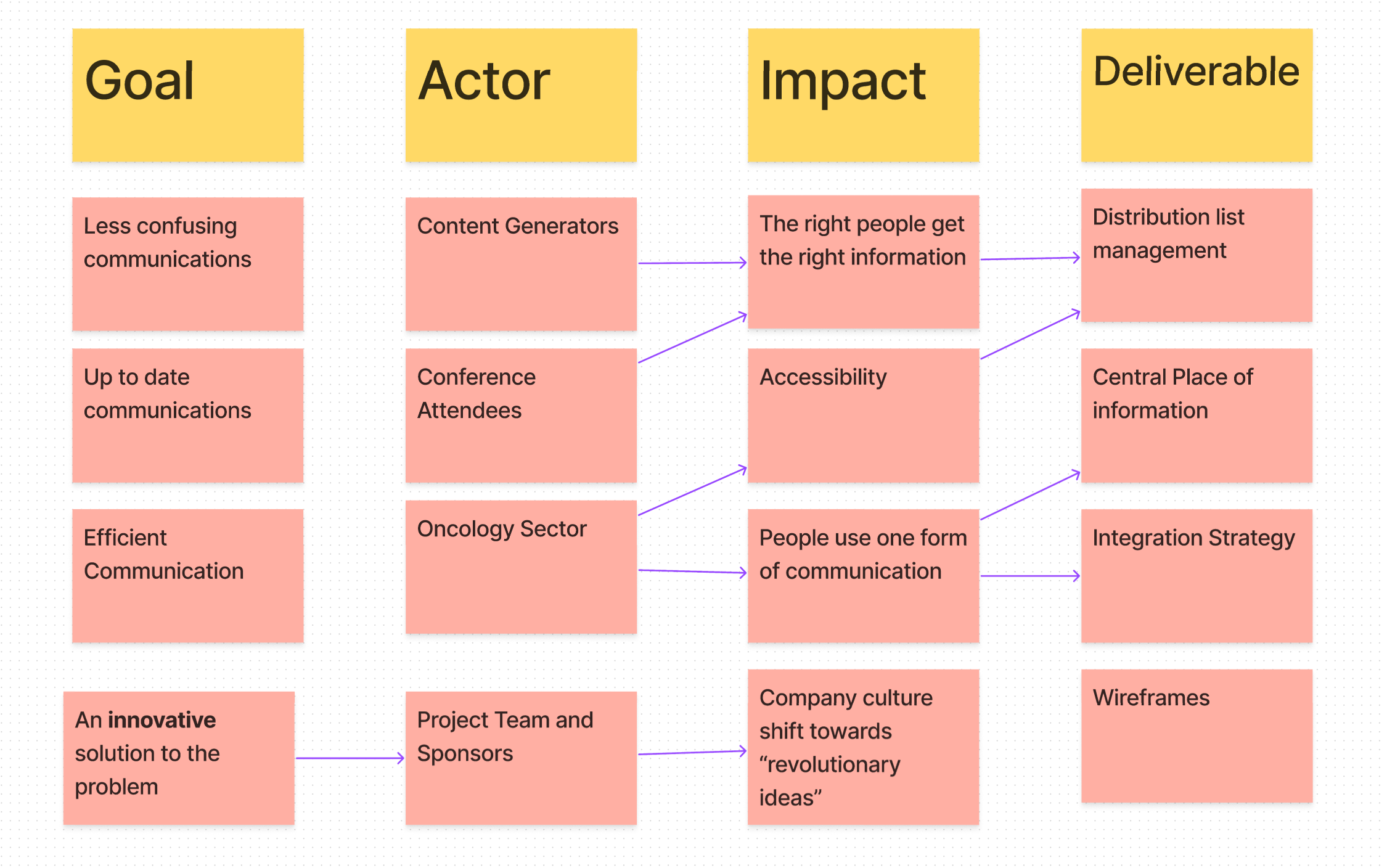
Collaboratively making an impact map prepared the project team for the ideation phase. The purpose of this exercise was to prime the team by aligning the team's understanding of the problem and clarifying the desired outcomes. The most challenging aspect of a workshop is the initial step of defining the problem and specifying the expected results. Through the impact map exercise, the team successfully collaborated toward the objective. This alignment allowed each team member to channel their creativity and contributions more effectively, ensuring that the individual T sheets were geared towards a common goal.
T- Sheets
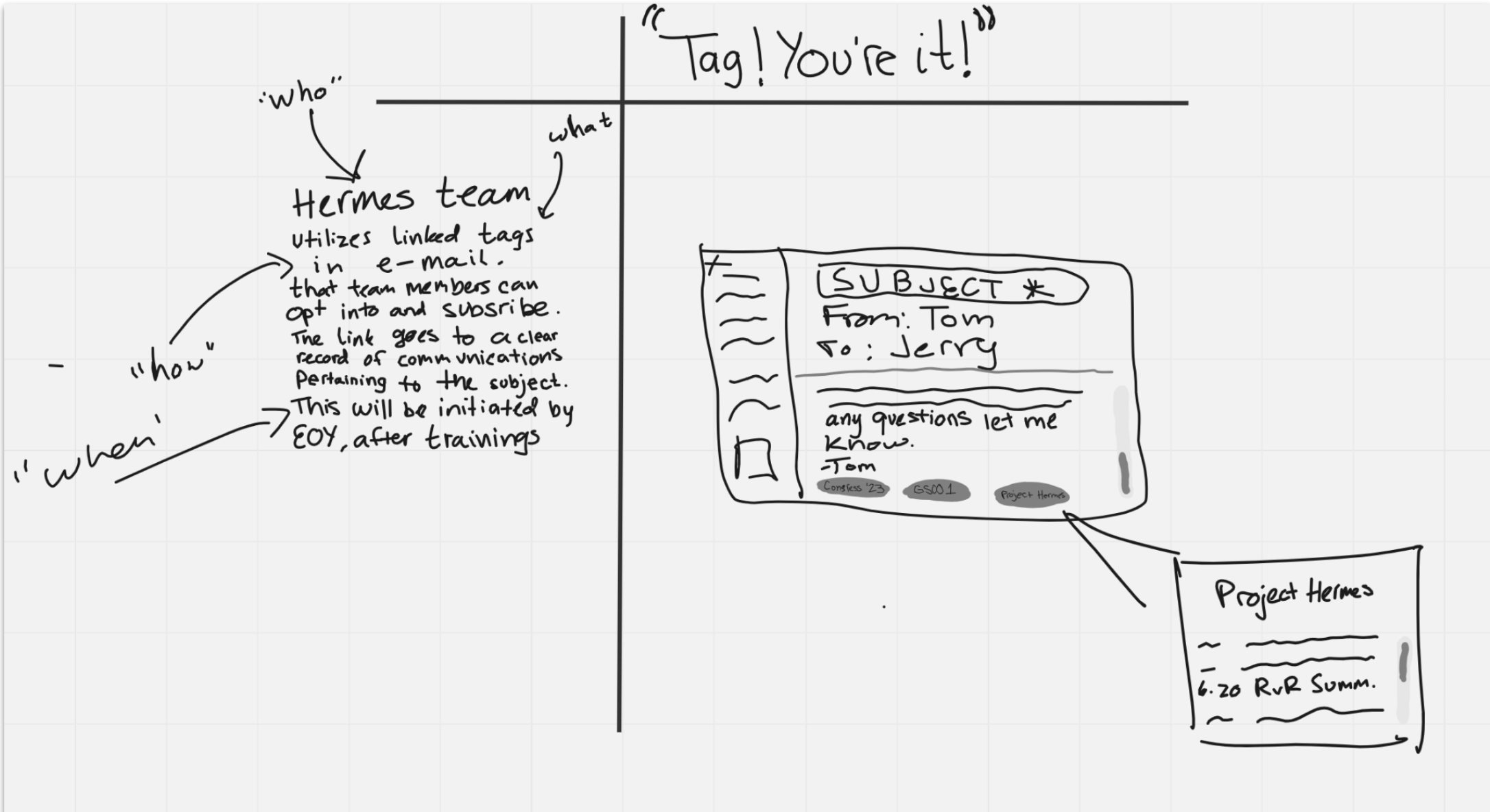
The second day of the workshop involved a systematic review of each team member's individual T sheets, which they had prepared as "homework." The drawings were categorized based on common themes.Then, we engaged in discussions about each categorized theme to gain a deeper understanding of the ideas presented. During these discussions, team members had the opportunity to express their thoughts and preferences. Through a collaborative voting process, we identified and selected the T sheets that resonated most with the team's collective vision and goals. These chosen T sheets served as the foundation for creating wireframes that would incorporate and all the key themes extracted from the most popular T sheets. This process not only helped us leverage the diversity of ideas within the team but also ensured that the resulting wireframes were a synthesis of the most promising and favored concepts, aligning them with the project's objectives.
Define
The interviews and workshop highlighted key pain points and also provided possible solutions.
| Key Pain Points | Design Solution |
|---|---|
|
Conference Confusion Numerous specialized oncology conferences caused confusion and information overload, leaving attendees struggling to track conference details and relevant updates. | Stakeholders expressed a strong desire for a centralized platform that would function as a hub for all conference-related information. The primary goal of this centralization was to alleviate the confusion surrounding the multitude of different conferences. By consolidating information, the solution would provide a clear and accessible repository, streamlining the process of accessing relevant details. |
| Disorganized Communication Channels Existing communication methods such as emails, Yammer, and SharePoint sites were uncoordinated and unregulated leading to inefficient information sharing and collaboration. | Cultural integration emerged as a key consideration. The solution needed to seamlessly integrate into the fabric of Johnson & Johnson's corporate culture. The proposed communication model to become an inherent component of employees' workflows and daily routines. This integration was envisaged to promote widespread adoption and active engagement, with minimal onboarding |
| Information vs Insights Difficulty distinguishing between essential information and potential insights hindered decision-making and insight extraction from communications. | One solution focused on a clear separation between information and insights. This involved structuring the communication model to distinctly present the necessary details while also highlighting key insights. This aimed to enhance the value of communications, supporting more informed decision-making and improved collaboration. |
| Distribution Lists Accessing and leaving distribution lists was unmanaged, exacerbating the issue of irrelevant information overload. | Respondents consistently expressed the need for control over the information they received. This highlighted the significance of tailored content consumption, where users could opt to receive only the information that was most relevant to their roles and interests. This personalization aspect aimed to combat information overload and enhance user engagement. |
Design
Wireframe Development
After the workshop, the project team voted on three T sheets as potential ideas to further develop. From these selections, I created wireframes that incorporated the best aspects of each of the chosen ideas.
Incorporated into the wireframes were design principles guided by extensive research, insights from the workshop, and close collaboration between the RVR team and the project team. I made sure that the solution seamlessly integrated into the company's infrastructure.
Key Features:
- Clear differentiation between separate congresses or conferences and insights sections.
- Insights categorized by the oncology field and populated with existing information from JNJ's infrastructure.
- Represents a novel and innovative solution for JNJ, aligning perfectly with the project sponsor's innovation requirements.
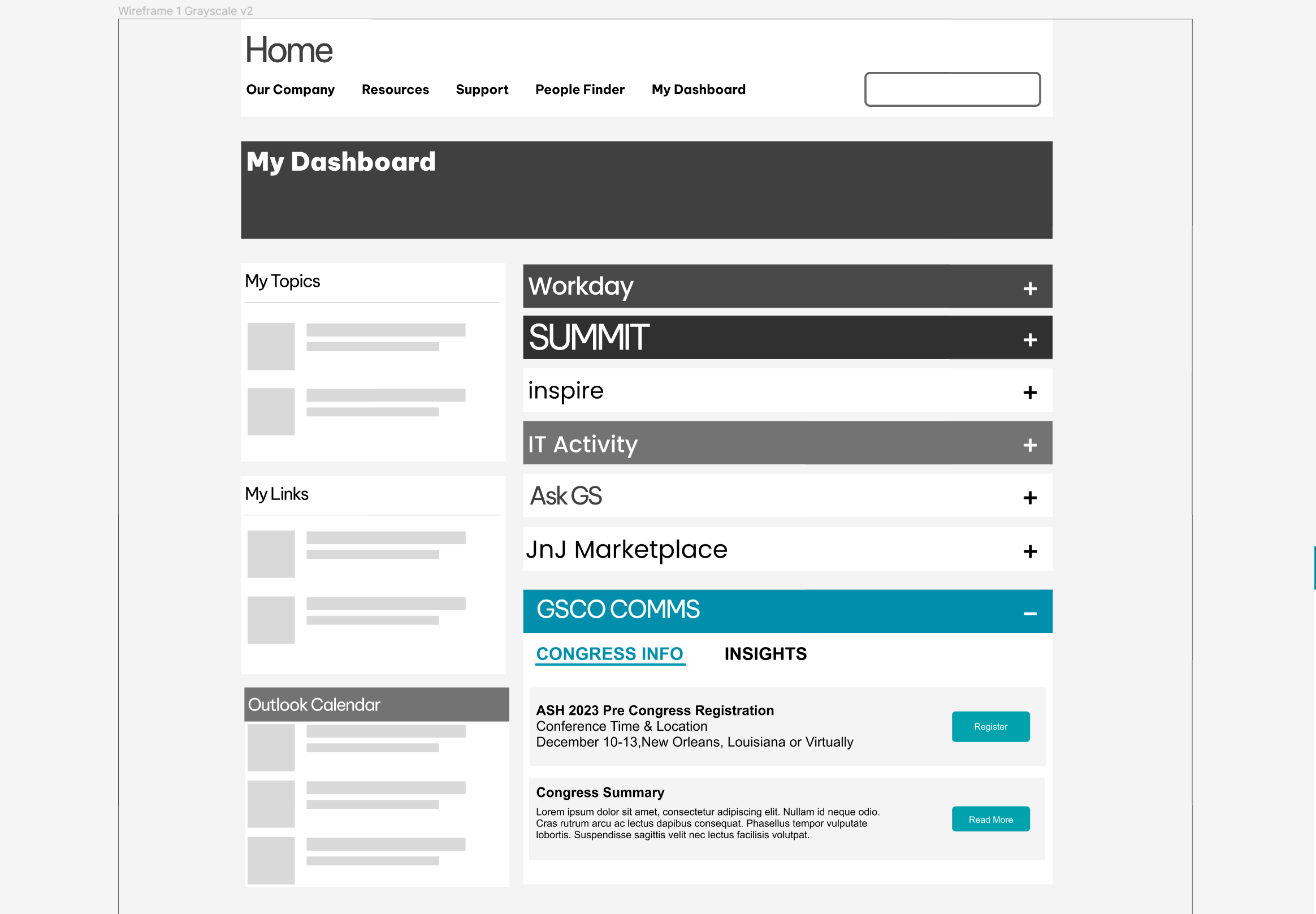
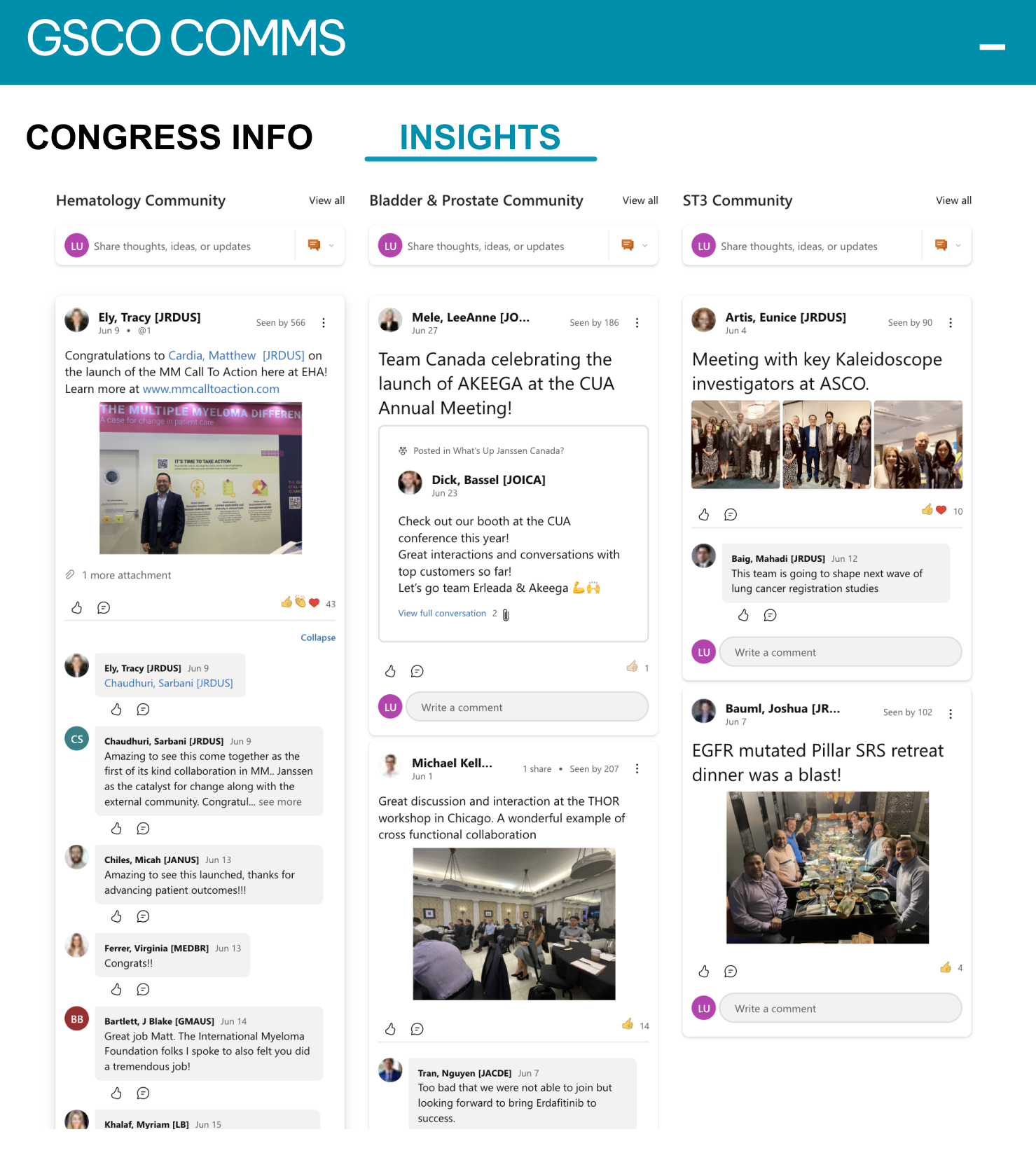
Results
The wireframes gained project team approval and were later presented the wireframes to project sponsors. Their endorsement marked the initiation of the first phase for the new communication solution.
In addition to successfully delivering the wireframes and obtaining project team approval, I ensured the project's sustainability by offering the option of ongoing support if needed by the project team.